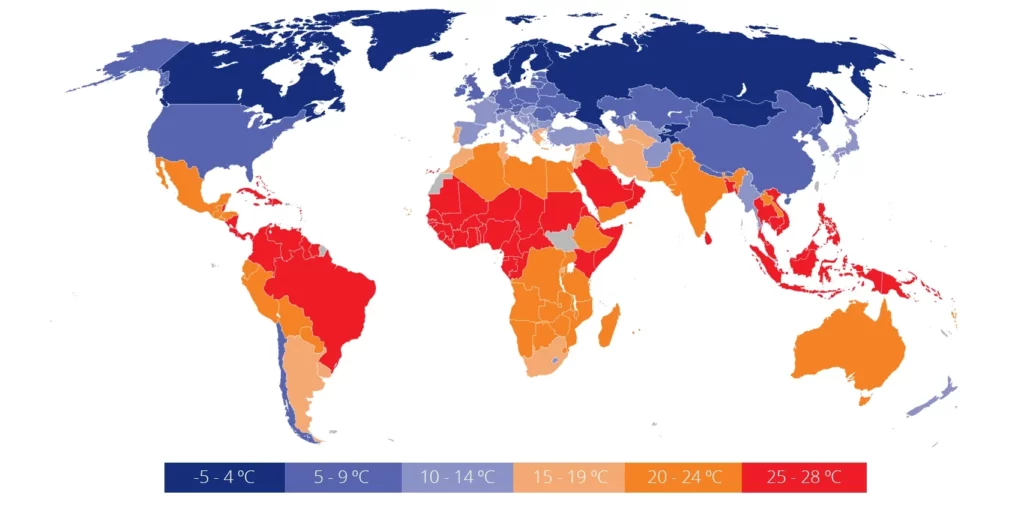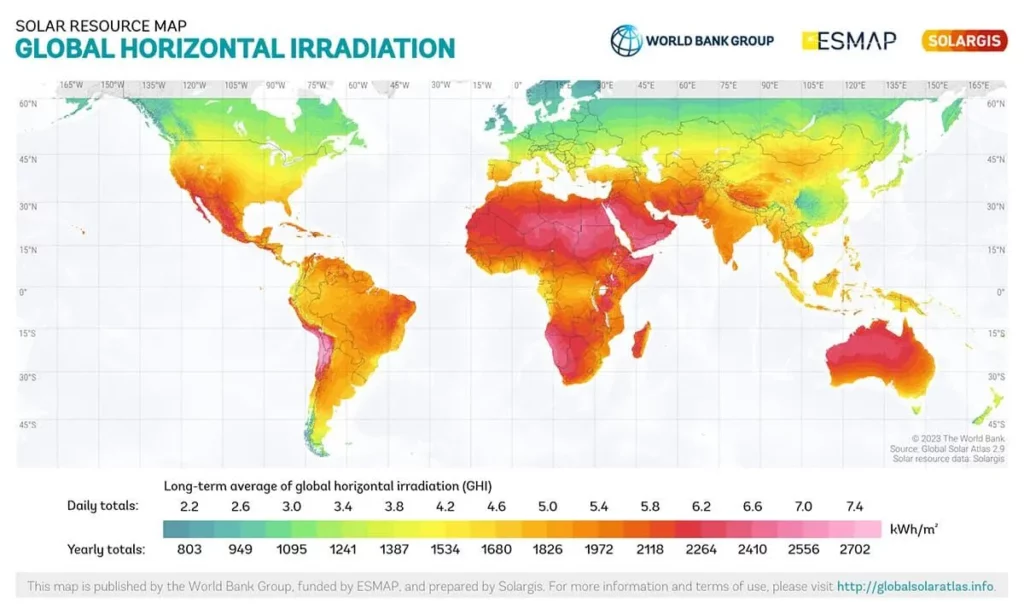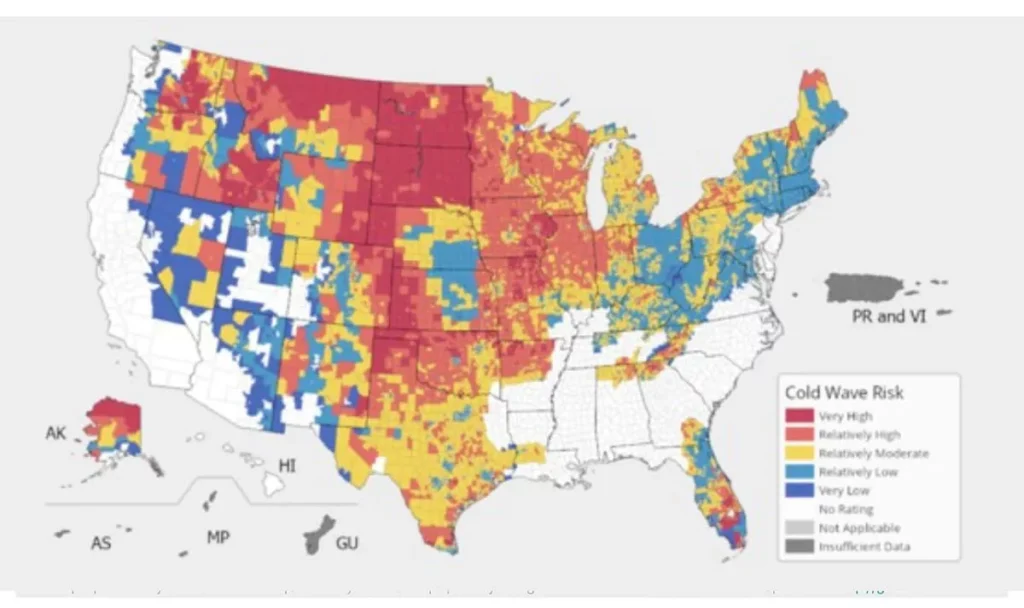Seeking to Optimize Performance Even in Extremely Low Temperatures
It is well known that a significant portion of the planet, particularly regions situated at northern latitudes, experiences considerably low average temperatures ranging between -5 °C (23 ºF) and 14 °C (57,2 ºF). These temperatures drop significantly during the winter period, where extreme lows of up to -60 ºC (-76 °F) have been recorded in areas of the United States, Canada, China, or Russia.

On the other hand, it is interesting to analyze the global horizontal solar radiation map, revealing areas where the radiation levels are moderate to high even in regions known for their low average temperatures: the United States, parts of China, and northern Asia.

Global Horizontal Irradiation obtained from the “Global Solar Atlas 2.0, a free, web-based application is developed and operated by the company Solargis s.r.o. on behalf of the World Bank Group, utilizing Solargis data, with funding provided by the Energy Sector Management Assistance Program (ESMAP). For additional information: https://globalsolaratlas.info
In this way, we can observe how low temperatures do not render solar energy generation unfeasible in these regions. The key lies in the presence of favorable conditions for solar radiation, which can be harnessed for energy production, provided that the solar tracker control system can operate efficiently under such environmental conditions.
Understanding the Cold Waves
Understanding of the climatic events and their effects is crucial to tackle and alleviate the challenges arising and to ensure the resilience of our societies in the face of changing weather conditions. In the upcoming years, we will experience greater climate variability, and the negative impact of cold waves may continue to be a significant local threat. In recent years, we have witnessed multiple episodes of extreme cold waves in the North American region, climatic events that have brought about significant consequences for both the population and agriculture, as well as the economy.
According to data provided by the National Risk Index of the Federal Emergency Management Agency (FEMA) in the United States, it has been identified that a substantial portion of American territory is situated at a risk level ranging from moderate to high in terms of the potential for experiencing a cold wave.

FEMA: Cold Wave Risk Index
Other regions like Europe, have encountered severe cold waves, resulting in substantial economic losses. Cold waves have manifested in northern European countries, central Europe, and even Mediterranean regions such as Spain.
This climatic volatility is also evident in Asian nations like China . In early 2023, China experienced an episode of extreme cold attributed to pressure differentials in the polar vortex. Consequently, northern regions of China, including the city of Mahe, recorded temperatures as low as -53 ºC (-63.4 ºF). Simultaneously, regions in countries like India were adversely affected, witnessing abnormal temperatures ranging from 1-3ºC in specific areas of Punjab, Haryana, Chandigarh, and Delhi.
Innovation in the Face of Extreme Conditions
![]()
The photovoltaic sector is not immune to these extreme phenomena, and that is why the products and services ecosystems must adapt to these situations. In this scenario, prevention and robust product design will be key to mitigating the adverse effects of extreme weather conditions.
At Suntrack by P4Q, and guided by the commitment to always provide the best service to the customers by adapting to their needs based on the geographical and climatic characteristics of their projects, Suntrack has introduced its technology to the market. This technology enables the controllers to withstand temperatures as low as -30° C (-22° F).
Since the release of the first Tracker Control Unit (TCU) in 2007, Suntrack has been gradually expanding and enhancing its portfolio of advanced products and services to meet the growing market demands. For this reason, in 2019, Suntrack introduced its first Tracker Control Unit (TCU) Self-Powered for Low Temperatures Solution to withstand the most extreme conditions, and currently, it has been deployed in over 15,000 devices.
Suntrack steadily seeks innovation to extend battery life through continuous monitoring of tracker movements, managing deep discharges, and controlled and periodic battery charging. Additionally, Suntrack ensures that there is always a minimum charge available, allowing the tracker to adopt a defensive or secure position as needed.
Suntrack’s commitment to prolonging battery life is evident in the ongoing exploration of new technologies. This involves cycling the latest batteries available in the market in external laboratories to observe their performance. Once the results are analyzed, their characteristics and chemical compositions are compared with the current battery pack used by Suntrack in its TCUs.
5 Benefits of TCU (SPB-300 Low Temperature with Extended UL Certifications) and why it fits with the hardest conditions
Suntrack guides its customers based on the specific location of the project through an energy balance study to determine if this solution is the most suitable. If this preliminary evaluation is positive, there are five key benefits to this solution:
1. Extreme Conditions: The technology’s performance has been rigorously tested under the harshest conditions, with successful operation at temperatures as low as -30 °C (-22 °F).
2. No Special Needs Required: This self-powered TCU is incredibly efficient, requiring only a standard dedicated panel and a 6Ah battery to operate optimally. This technology has the same footprint and connections as other TCU models so there are no changes required in the tracker.
3. Battery protection: To ensure optimal performance, it is a lithium (LFP) based battery which is heated and enclosed within a thermal insulation material. So even if the temperature outside is negative, the battery inside is always kept at a milder temperature.
4. Easy Installation: This TCU for low temperatures, integrated into the entire Suntrack ecosystem, has no functional differences. Therefore, the installation process during commissioning will be as easy as with other TCU devices.
5. Quality Assurance: Suntrack oversees the comprehensive production process at its three facilities (Albuquerque, USA; Alonsotegi, Europe; and Kunshan, China), certifying equipment according to the relevant IEC and UL tracker standards.
